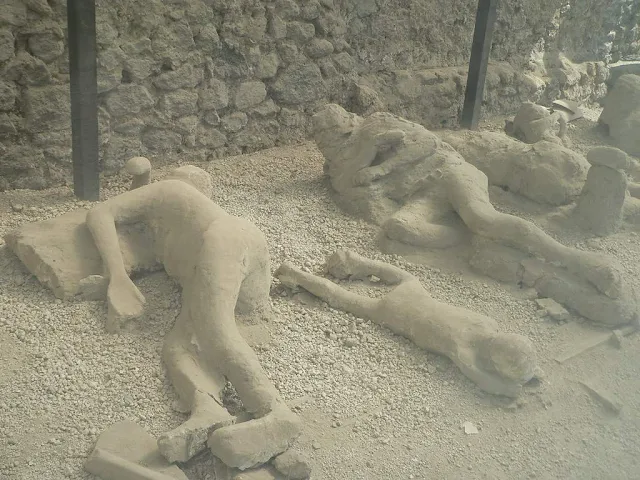Facts About Volcanoes
Volcanoes are not just spectacular displays of nature's power; they are fundamental to the Earth's geological processes, influencing everything from the formation of continents to the very air we breathe. Here are some intriguing facts about volcanoes that highlight their significance and diversity.
Interesting Volcanoes Facts
What is a Volcano
A volcano is a geological feature on a planetary-mass object, like Earth, where molten rock (magma), ash, and gases escape from an underground magma chamber onto the surface. This eruption can manifest in various ways, from effusive lava flows to explosive blasts.
Volcanoes Formation
Volcanoes are formed when molten rock called magma rises from the Earth's mantle and erupts onto the surface. This creates an opening in the Earth's crust called a vent. Over time, repeated eruptions build up layers of lava and ash, forming the cone-shaped structures we recognize as volcanoes.
Types of Volcanoes
There are four main types of volcanoes
- Shield volcanoes: These are the largest and most common type of volcano. They have gently sloping sides and are built up from many layers of fluid lava. Mauna Loa in Hawaii is an example of a shield volcano.
- Stratovolcanoes (Composite Volcanoes): These volcanoes are made up of alternating layers of lava and ash. They are typically steeper and more cone-shaped than shield volcanoes. Mount Fuji in Japan is an example of a composite volcano.
- Cinder cone volcanoes: These small, cone-shaped volcanoes are formed from the accumulation of cinder, which is small fragments of lava that solidify in the air. They are often found in groups, such as the cinder cones in the Valley of Fires in Nevada.
- Calderas: These are large, bowl-shaped depressions that form when the summit of a volcano collapses. They can be many kilometers in diameter and often contain lakes or swamps. Crater Lake in Oregon is an example of a caldera.
Volcanoes Occurrence
Volcanoes are most commonly found along tectonic plate boundaries, where the Earth's plates are moving apart or grinding together. The Ring of Fire around the Pacific Ocean is home to about 90% of the world's active volcanoes. However, volcanoes can also be found in the middle of plates, where hot plumes of rock rise from the mantle.
Volcanic Eruption
A volcanic eruption occurs when pressure from gases within molten magma causes it to burst through the Earth's crust, expelling lava, ash, and gases, dramatically altering landscapes and even influencing global climate temporarily.
United States Volcanoes
With about 170 potentially active volcanoes, the United States hosts some of the world's most active volcanic systems, from the fiery eruptions of Hawaii's Kilauea to the explosive history of Mount St. Helens, influencing everything from landscapes to local economies.
The Smallest volcano in the World
Cuexcomate in Puebla, Mexico, Standing at a mere 43 feet (13 meters), Cuexcomate, located in Puebla City, Mexico, is often referred to as the smallest volcano in the world. However, it's technically an inactive geyser, formed by the eruption of nearby Popocatépetl volcano. Its cone shape, sinter deposits, and past hydrothermal activity have earned it the "volcano" nickname, though.
 |
| Volcanoes distribution map |
Volcanoes in Italy
Italy's position on the converging boundary of the African and Eurasian tectonic plates makes it a volcanically active region. This geological setting has given rise to several notable volcanoes, including the active Mount Etna, Stromboli, Mount Vesuvius, and Vulcano, as well as dormant giants like Campi Flegrei, Ischia, and the Phlegraean Fields.
Not All Volcanoes on Land
Surprisingly, most of Earth's volcanoes, about 75%, are submerged, creating extensive underwater mountain ranges that remain largely unseen, shaping the ocean floor with their eruptions.
Vesuvius' Eruption
On a fateful day in 79 AD, Mount Vesuvius erupted with devastating force, blanketing the Roman cities of Pompeii and Herculaneum in volcanic ash and pumice. This catastrophic event preserved these ancient settlements like a time capsule, offering modern archaeologists and historians a vivid, albeit tragic, portrayal of daily life in the Roman Empire at that moment in history.
 |
| Mount Vesuvius Eruption Bodies |
Geothermal Energy
Volcanoes not only pose dangers but also provide benefits; their geothermal energy can sustainably heat homes, drive turbines for electricity, and enhance agricultural growth in greenhouses, showcasing nature's capacity for renewal.
Lighthouse of the Mediterranean
The volcanic island of Stromboli in Italy is often called the "Lighthouse of the Mediterranean" not only for its frequent eruptions but also for the explosive sounds it produces, resembling cannon blasts or deep rumbles, as trapped gases find their way out.
World's Largest Volcano
Mauna Loa in Hawaii isn't just the tallest mountain on Earth above sea level (from base to peak), it's also the largest volcano by volume, holding enough material to build a small continent!
Volcanic Glass Hair
In Hawaii, where volcanic activity is common, eruptions can produce "Pele's hair," delicate glass threads created when molten lava is spun into the air and cools quickly, honoring Pele, the volcano goddess.
 |
| Pele's hair - Volcanic Glass Hair |
Volcanic Islands
Some of the world's most beautiful island destinations, including Hawaii, Iceland, and the Maldives, owe their existence to the fiery eruptions of volcanoes beneath the sea, sculpting land from lava over millennia.
Volcanic Thunderstorms
Volcanic eruptions can spark their own thunderstorms; as the ash cloud ascends into the atmosphere, the friction between particles generates static electricity, resulting in dramatic lightning within the ash plume.
Read also:
Active and Dormant Volcanoes: Difference Types of Volcanoes
The Differences Between Crater and Caldera
Volcanic Eruptions Types









%20(1).webp)